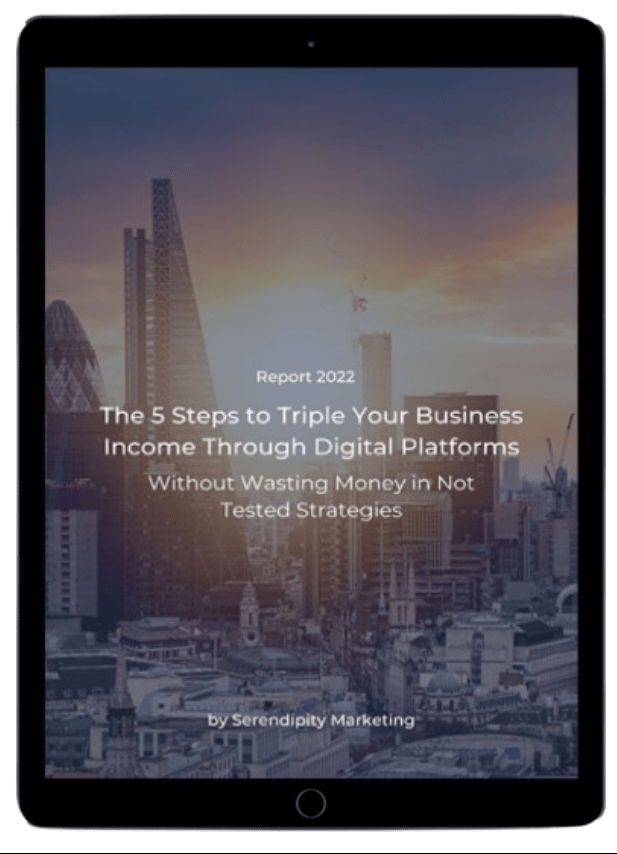Have you ever spent hours and hours looking at the screen, thinking and trying to figure out your social media content and what to post?
Well, we can guarantee you that you can spend as little as 60 minutes planning out your social media content for the entire week.
And it won't even be nearly as hard as you imagine. In this article, we are going to break this down for you, including hacks and tools.
Hi there, and welcome back to Serendipity Marketing. We're a digital marketing agency with a mission to help small businesses grow by applying psychology to their marketing strategies.
Before we get started, please go ahead and follow us on LinkedIn, Facebook, orInstagram.
According to Statista, over 3.6 billion people use social media and is projected to reach 4.41 billion by 2025.
Here, we're going to be focused on how to plan your content. Creating content like videos and long-form written posts can take longer. But just knowing when you should post each of your content pieces should give you a huge advantage and just improve your efficiency overall.
Before we get into planning this process itself, here are some things that we do that help us get to the beginning of the week without necessarily creating any form of content and even scheduling things up.
Video Content
For video content, every month, you should come up with a list of video concepts that you're going to record videos about.
Literally, that's it. For example, we post videos and reels a few times a week and we typically create a list of 16-20 video concepts to start with. Not 3, but 16-20, which roughly covers monthly content.
Then you need to spend time outlining this list. Let's say, a few bullet points for each video. This way, you can just rip off and just start discussing those bullet points in the video.
It's important to include any database things like stats or research because that shows that you're an authority, which helps you with overall followers, credibility, and best of all, it helps you with Google Rankings in the long run.
Then you would need to spend part of the day, let's say the morning or the afternoon, just recording videos.
If you don’t have a team that can help you finalise these videos and get them ready for the social network you want to place them in and optimise them so that you don't even have to worry about that, just bust out your phone, record, upload to social media. As easy as this.
And here's the cool thing, when you're uploading videos to these social platforms, you can schedule them in advance.
Image Content
For image content instead, we do something similar to what we do for the video content. So, we come up with a list of concepts that are worth going over on social media in the next week or two.
We'll then plan the content from our image carousels, quotes, even family pictures (for personal brands).
Now, when you do this, and you're creating all this content, you don't have to necessarily hire a designer. You don't spend a lot of money. You can just use tools like Canva, Adobe Spark, or PicMonkey to create those images, modify the quotes, and get them up.
And if you want to move really fast, you should have a few templates with your brand, your colours, the fonts that you use so that you can just whip in the text for let's say things like quotes or sentences.
That way, you can focus on the content itself instead of having to figure out the basics like design each and every single time.
Now, out of curiosity, leave a comment below and let me know what tool you use for your images on social media. We don't always use one tool. Sometimes we use Adobe Photoshop or Canva, but we’re curious to see what you use.
The bottom line here is you should keep a database of ideas and pre-conceptualised topics. This way, whether you're sick, or you're procrastinating, you just don't feel like you want to execute, boom. You can go into your vault, pull one out, post it, and you're off and to the races.
Social Media Content Planning
Now, let's dive into the planning process.
1. List all the content types
List out all the content types that you can commit to publishing that week. Share a blog post, create some content, maybe a live video, story, shorts, podcast promotion, maybe database information posts, or industry research.
You can just do an "ask me anything", or you can just bust out your phone and record a video or do an image carousel. Maybe you can even use a third-party quote; just make sure you cite the third party in that quote - don't say it was yours when it wasn't.
You can do video testimonials, client success stories, podcasts announcement, maybe a quiz, poll, contests, memes, collaborations.
As you can see, the list really does go on and on.
You can even just do things like a Q&A session, or an interview, or a day in your life.
Alright, now before we move on with the next social media content planning step, have you ever thought about how much you should invest in marketing to generate constant business growth? Click the button below to calculate the ideal marketing budget you should allocate for higher visibility, engagement, and profit.
How much should you invest in Digital Marketing?
2. Match the content
Match the content type with the social media channels that you're willing to post on. You can use a spreadsheet to do this part, or even just pen and paper.
Now, if you're not sure what social network is good for you with all these content types, Instagram is good for you if you have visual and image-based content like carousels, pictures of your day-to-day, quotes, short videos, stories, personal podcasts cuts.
Facebook works similar to Instagram, but you can also share blog content and other forms of content that may be hosted somewhere else like that. Maybe it's direct links to your podcast episode or even direct links to your blog posts. But that's what works well on Facebook. They usually don't necessarily like links as much, but similar to Instagram, that's what they like.
LinkedIn is a little bit different. You can do a lot better if you post a mix of the following content types, long-form written posts, image carousels breaking down complex concepts, into really simple bite-sized information, that's really digestible, shorter videos. You can have a cap of 10 minutes on a video. Podcast cuts work well, shorter written posts with impactful quotes, whether they're created by your third parties. If you use a third party, what do you got to do? Cite the source.
Twitter is more conducive to diversity, and apart from stories, you can pretty much post anything that isn't long/form. From images to videos, to external links, Twitter pretty much allows you to share anything openly.
3. Create a social media calendar
Assign the days and social platforms on which you'll be posting each type of content on. We recommend that you publish blog posts a minimum of twice a week.
It depends on how important your blog is to your audience, and the type of knowledge you're sharing, but people love it, and it gets tons of loyal engagement.
We recommend that you create video content at least once a week. You can go either live or produce video content and upload it, or interviews, or video collaborations with other creators that way their followers see your stuff and your followers see their stuff.
4. Outline content topics
Create a rough outline of what each post should talk about and look like. If you don't have a database of pre-conceptualized content pieces, all you have to do is this step to create a bullet list of what each post should look like.
Remember that now you're just planning. So be creative, and don't feel like you need to worry about how you're going to do with the images or videos, or how many likes you're going to get.
5. Write up your captions
Now that you know each post and what it'll look like, you need to start writing your captions.
Keep in mind that you'll never do things perfectly well, and that's okay. Be simple, to the point, and add in your personality, just like we do with our blog articles.
Don't just be technical, bland, or boring. Spice it up, be entertaining, be human.
6. Schedule your social media content
Schedule your content using any one of the tools that you like from Hootsuite to Buffer or Facebook Creator Studio. There are so many tools out there.
And that’s it! Here is how you can plan and schedule in advance your social media content for an entire week in just 1 hour. Now, it’s time to put it into practice.
If you need help with your social media marketing to grow your business in terms of visibility, engagement, and profit, contact us today and speak with one of our digital marketing experts to see how we can build the bridge between the point you’re standing at right now and your goals.



